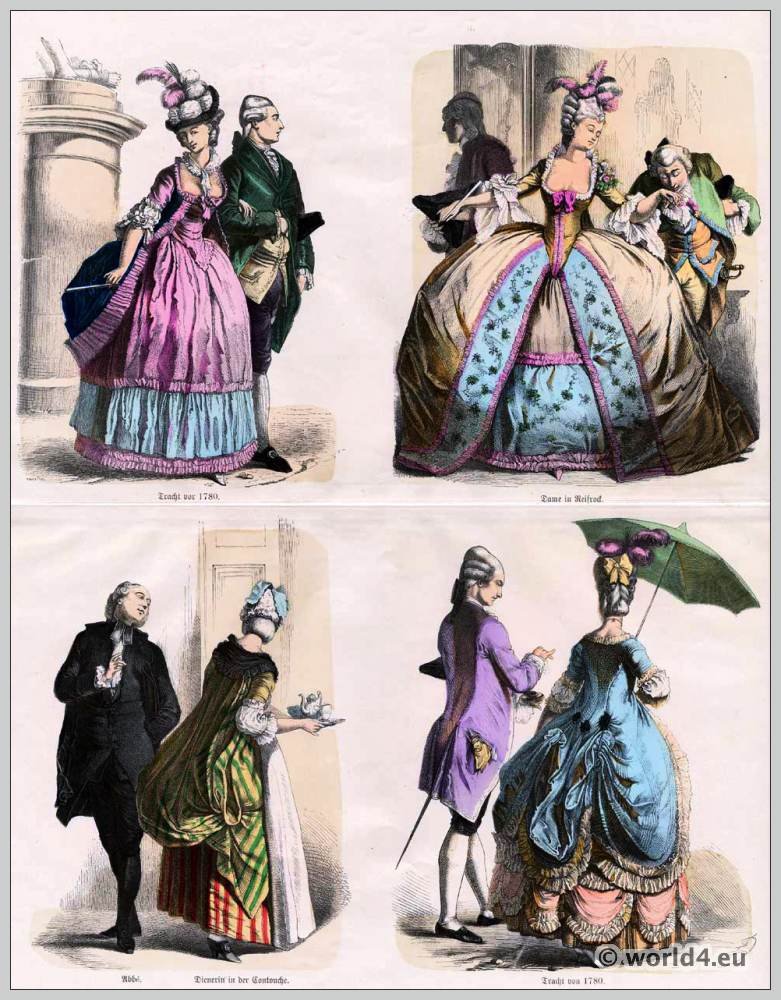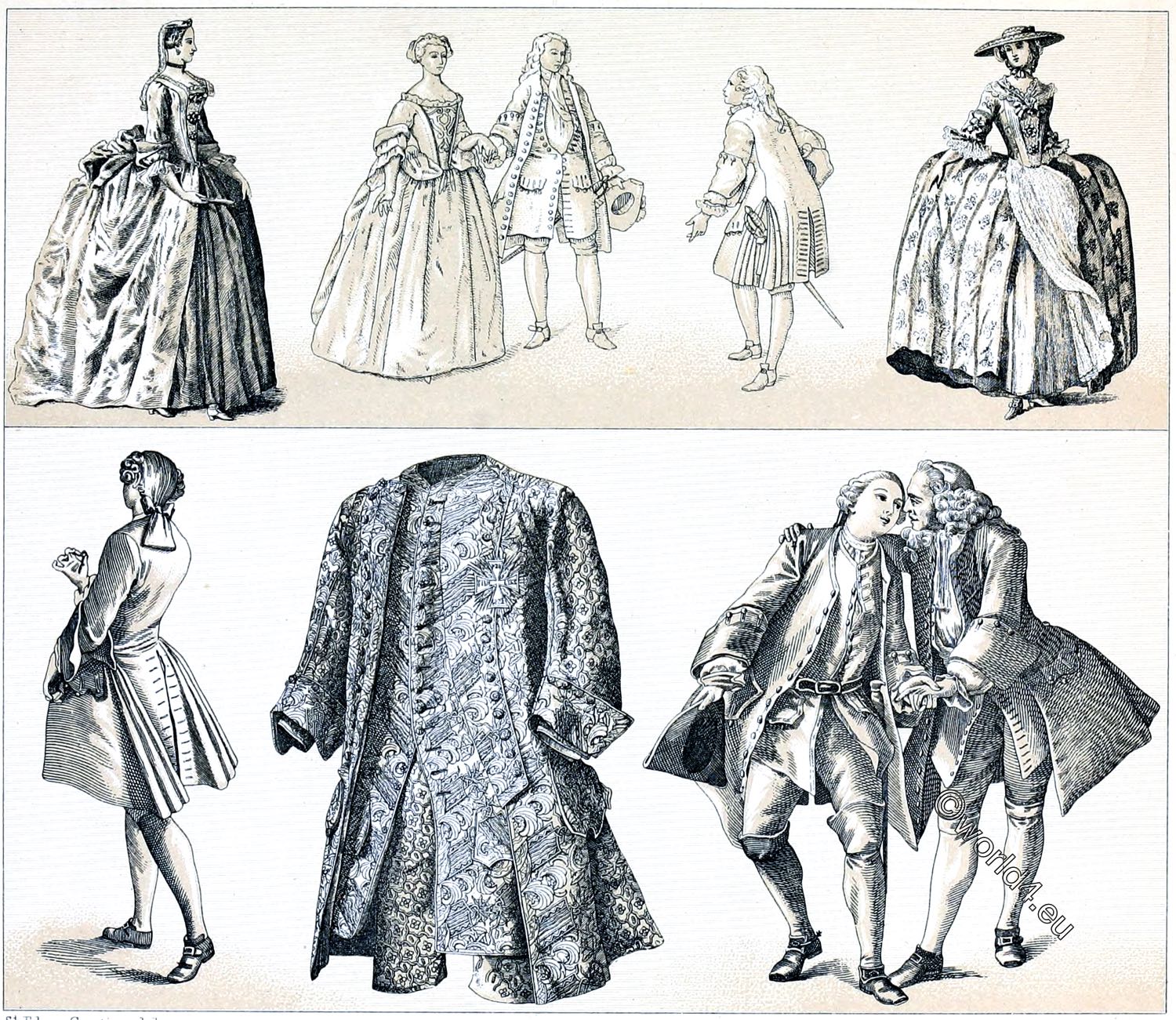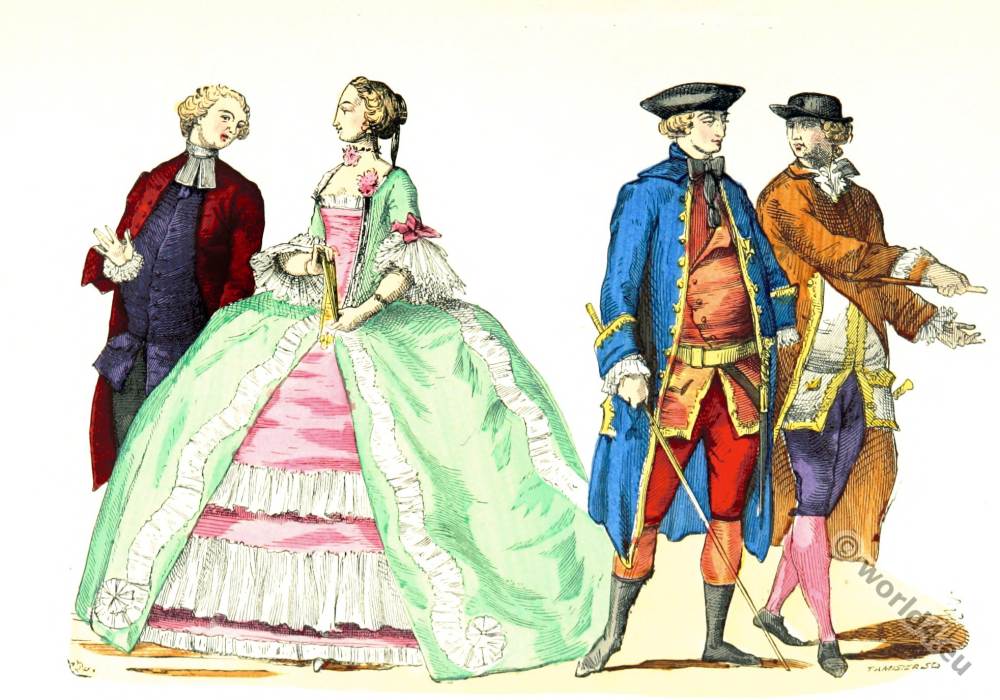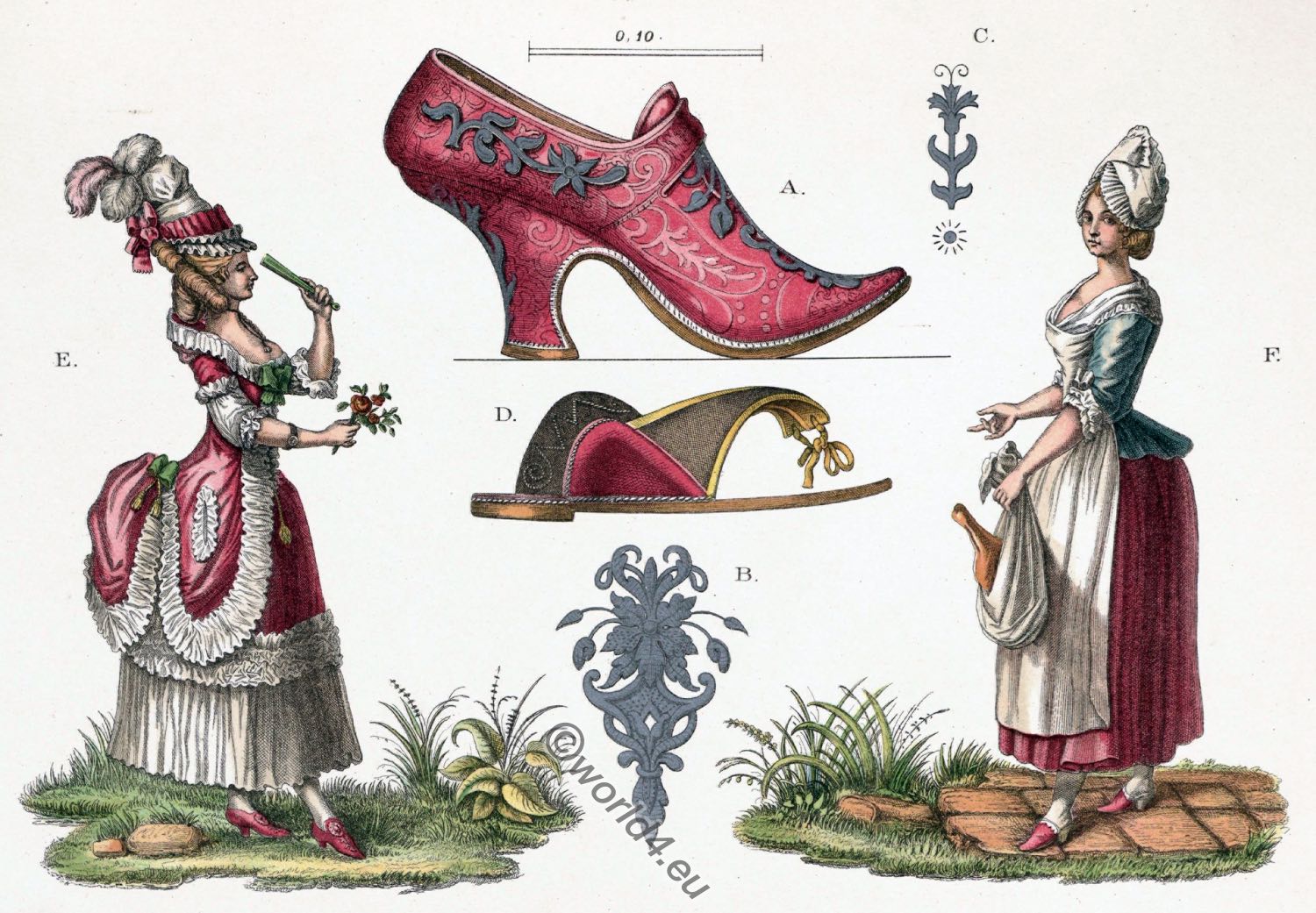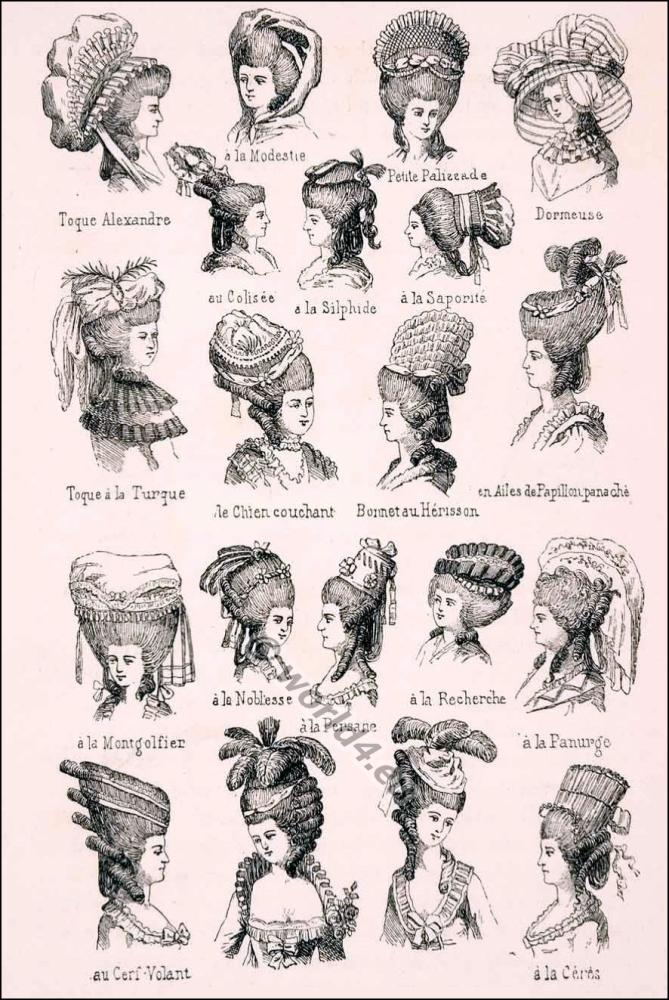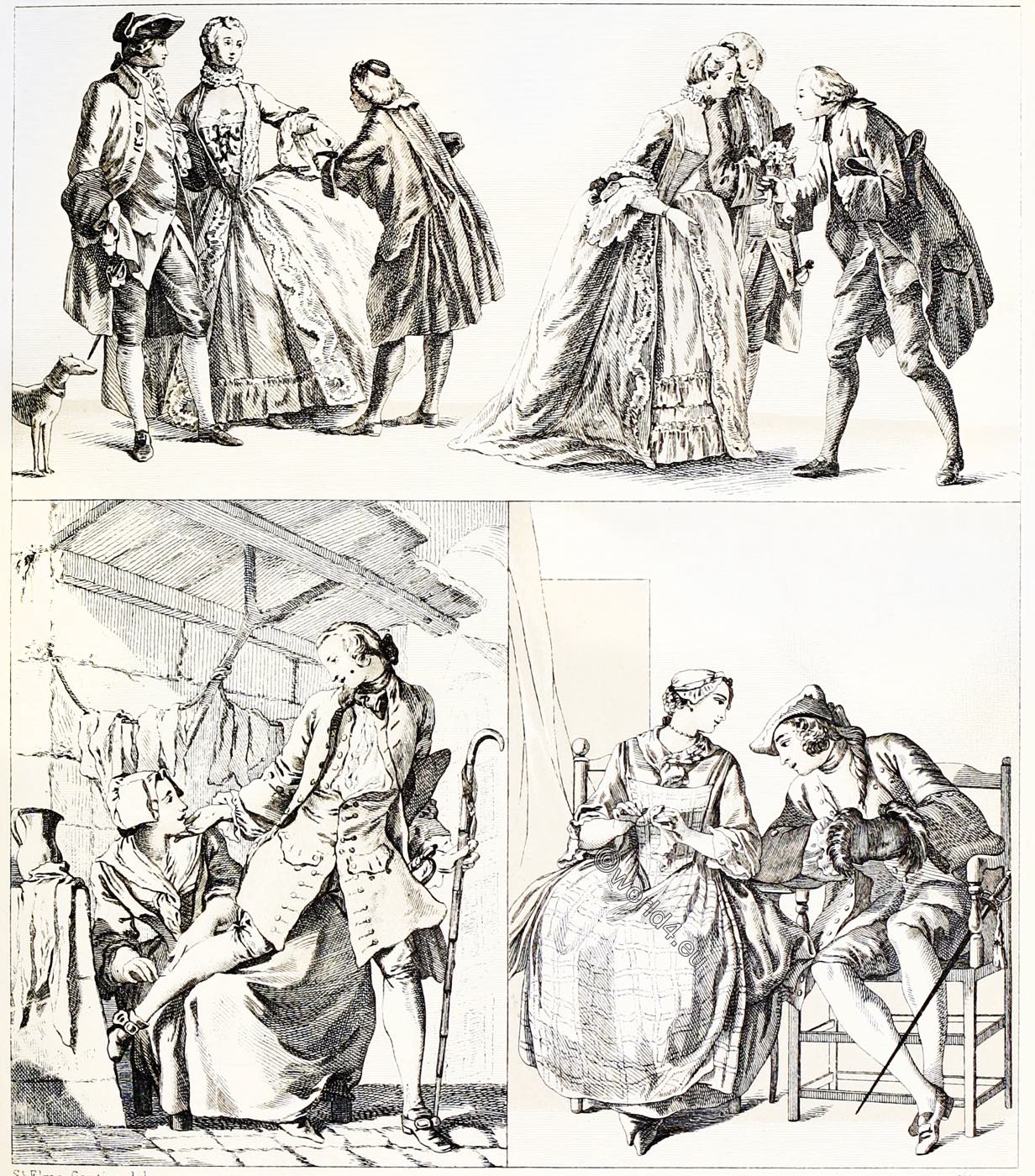
FRANCE. XVIIITH CENTURY. THE ELEGANT WORLD; FOLK GIRLS (1735-1755).
France. The elegant world of rococo in the 18th century. Stocking and lace maker. Officer of the royal house.
Stocking and lace maker.
The scenes on the lower half of the panel are taken from a series of six sheets engraved by Charles – Nicolas Cochin in 1737.
The stocking maker had her place in the street so that any repairs to the stockings of the Elegants could be carried out immediately. She is simply dressed. The long sleeves and the pointed shoe remind of the fashion of the day. Her chest covers the scarf, called venez-y-voir by the coquettes.
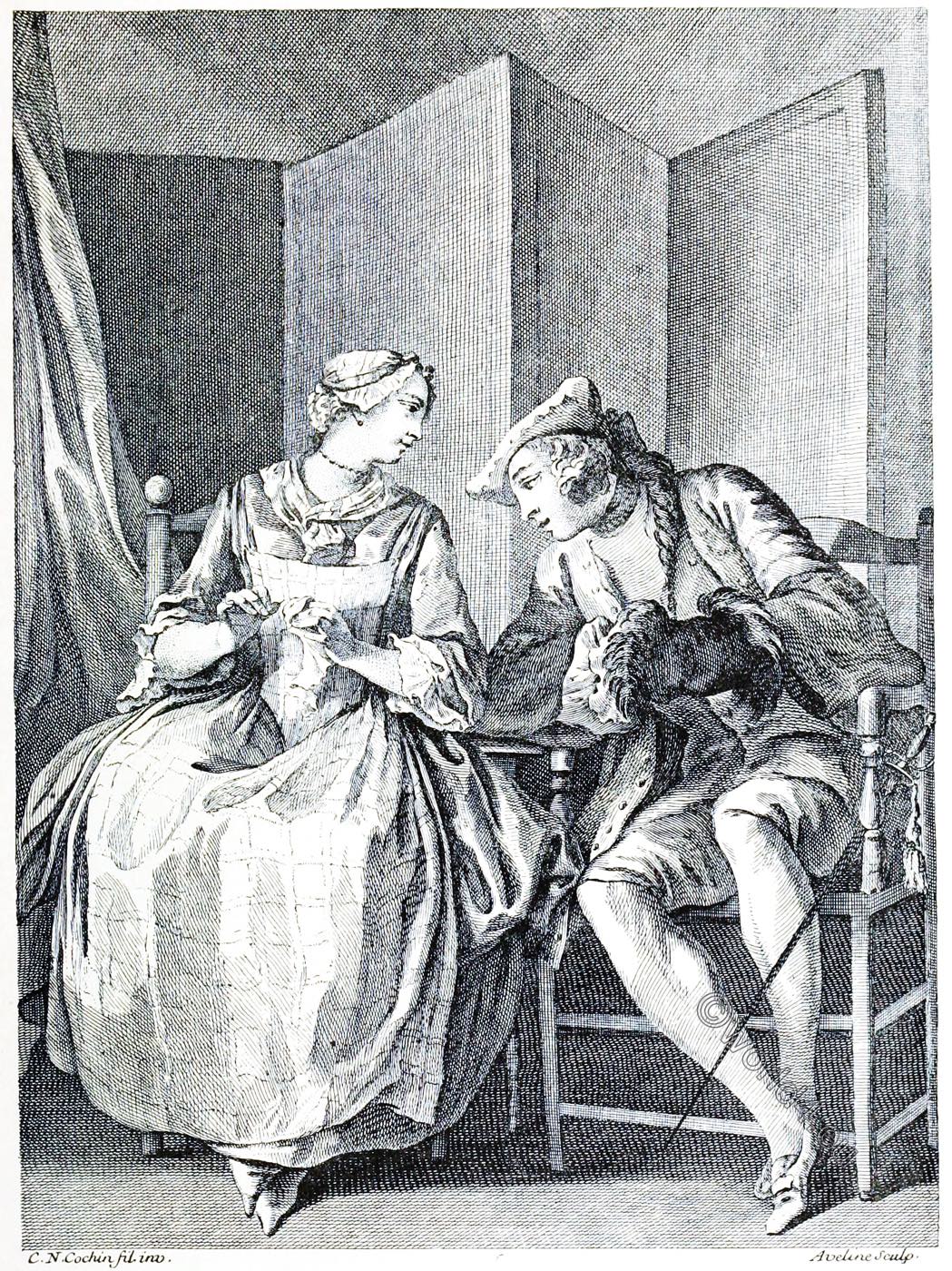
THE LACE WORKER:
“Miscellaneous Charges from the Rue de Paris.”
(Pierre Aveline, after Cochin the son.)
The lace worker wears a large apron with a high bib.
The young man (beside her) who jokingly touches the stocking stopper under the chin is an officer of the royal house. As his staff with its hawk-headed crutch indicates, he is one of the two hundred noblemen who have always been in the king’s company. He wears a long, free-falling skirt, waist buttoned waistcoat and breeches. His shoe, rounded at the tip since 1720, is closed by a buckle, the wooden heel is painted red, a badge of nobility. The hair tied in a braid is powdered white. On the cheek sits a mouche, beauty patch. A bandage tied under the chin serves as a tie. The shirt is provided with a lace jabot, the hat is tucked under the arm.
The galan of the laceworker wears the small tricorn with galonned and feathered edge. The muff has become smaller and has lost the passe-caille, the string with which it was attached at waist height.It’s part of the half-toilet where people used to go for visits. The vest is buttoned up to the neck. The hair is separated by a bow in two parts, cadenettes, one of which is hanging from over the shoulder. It is a reminiscence of the time of Louis XIII. The waistcoat always had the same features as the skirt; the only luxury to be found in it were the buttons and buttonholes, as the gala dress was only part of the military uniform or livery.
Groups from the elegant world.
The two scenes on the upper half of the panel are reproduced from drawings by Joseph Vernet, engraved under the supervision of Le Bas. Unfortunately, of these sketches by the painter of the French ports, only a series of 12 numbers has been engraved. They give an excellent picture of the costumes and customs of the time, since Vernet had a very special sense for costumes and the way of wearing them.
See: Edmond und Jules de Goncourt. La Femme au XVIIIe siècle und L’Art au XVIIIe siècle. Quichemt, L’Histoire du costume en France.
Source:
- History of the costume in chronological development by Auguste Racinet. Published by Adolf Rosenberg. Berlin 1888.
- French engravers and draughtsmen of the XVIIIth century by Lady Emilia Dilke. London: G. Bell and sons 1902.
Related
Discover more from World4 Costume Culture History
Subscribe to get the latest posts sent to your email.

